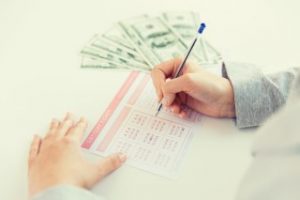EuroMillions, one of Europe’s biggest lotteries, has captured the attention of millions of people with its big jackpots and prizes. It’s a game of chance, but some people think that looking at past draws might show you common numbers. Let’s check out the most common Euromillion numbers are the real regulars, the ones that show up all the time.
Understanding How EuroMillions Works
EuroMillions is simple: you pick five numbers between 1 and 50, and then two lucky star numbers from 1 to 12. There’s just so many ways the numbers could go, guessing them is like trying to find something super small in a massive mess. Thing is, some numbers just keep popping up more often than the rest.
The Most Common EuroMillions Numbers
Even if it’s all luck, checking out the stats can give you some cool hints about the numbers that show up most. If you look back, some numbers have definitely shown up more often in the EuroMillions draws. Numbers like 50, 44, 23, 19, and 4 are often drawn, and people hoping to win Euromillions have noticed. When it comes to the lucky stars, 2, 8, 3, and 7 seem to be the popular ones, and people are using them.
The Gambler’s Fallacy

You might think some numbers are ‘due’ after looking at past results, but remember, that’s just the gambler’s fallacy at play. It’s thinking that because something has not happened much, it is more likely to happen now. Here’s the deal: every draw is a fresh start, what happened before has no effect on what happens now.
Strategies and Considerations
Everyone’s got their own tricks for choosing EuroMillions numbers. You’ve got people who pick the numbers that are always getting drawn, and then others who go for the numbers that hardly ever come up, hoping for a surprise. Some people just hit the ‘quick pick’ button and let the computer choose, while others carefully pick numbers that mean something to them, like birthdays or special dates.
Common Numbers
Basically, people like the numbers that come up a lot because they think it means they’re more likely to win. People think, ‘Since these numbers have been drawn a lot, they’re more likely to be drawn again. People think, ‘Since these numbers have been drawn a lot, they’re more likely to be drawn again.
The Randomness Factor
EuroMillions, just like any lottery, is totally random. They’ve got these high-tech machines and ways of doing things to keep it completely random. This randomness is what makes the lottery fair, and it makes it impossible to know which numbers will be drawn. Everyone’s still curious about most common Euromillions numbers. Even though you can analyze the stats, it is important to remember that each draw is completely random and independent.
































